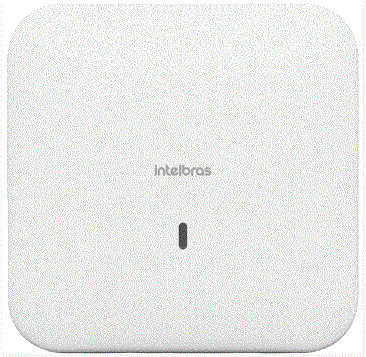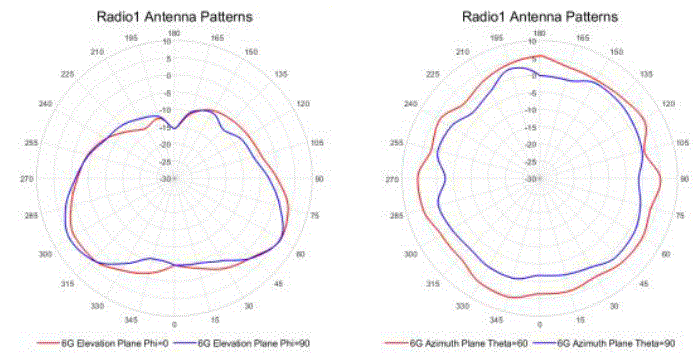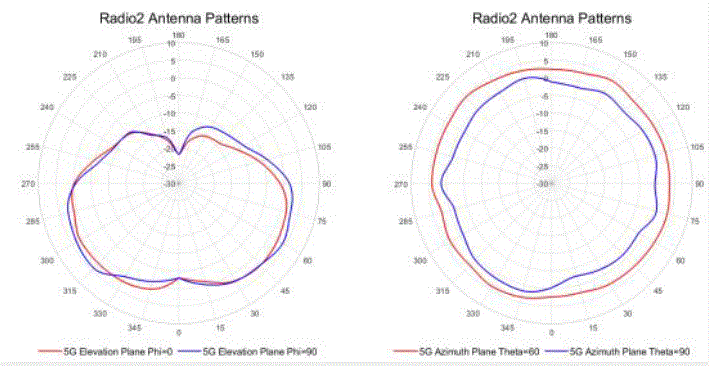Intelbras AP 7739 Wi Fi Router

Intelbras AP 7739 New Generation 802.11be Indoor Series Access Point
Overview
Intelbras AP 7739 is a new generation Wi-Fi 7 product that complies with the 802.11be standard. Compared to Wi-Fi 6/6E products, it can provide higher rates, larger capacity, and lower latency. The access point has tri-radio 12 streams and with built-in antenna, including 4×4 6-GHz, 4×4 5-GHz, and 4×4 2.4-GHz, achieving speeds up to 18.67 Gbps. The access point has a 10 Gbps optical port and a 10 Gbps electrical port, providing redundant uplink ports. Redundant power supplies provide fault-free performance during failover. This access point supports both wall-mounted and ceiling-mounted installation, and is designed for high-end enterprise offices, high-density wireless access, multi-party video conferencing, online teaching, exhibition centers, and other scenarios that require high-bandwidth and high-quality network experience.
Features and benefits
New-generation Wi-Fi standard 802.11be (Wi-Fi 7)
- Wi-Fi 7(802.11be) is the next generation Wi-Fi standard, with improvements in the following features compared to Wi-Fi 6/6E: Supporting 320MHz bandwidth is an important physical layer technology in Wi-Fi 7. Compared to the 160MHz bandwidth of Wi-Fi 6/6E, the peak theoretical rate is directly doubled. Wi-Fi 7 has more bandwidth combinations, which can bring higher speed, wider coverage, and better multi user processing capabilities.
- 4096-QAM is also an important new technology in Wi-Fi 7. Compared to the 1024-QAM technology in WiFi 6/6E, 4096-QAM technology can increase transmission speed by 20%, resulting in higher bandwidth utilization, more stable transmission rate, and better user experience. MLO, Multi-Link Operation. By establishing multiple links, it can effectively improve the network performance, providing higher throughput, lower latency, and better connection quality. MRU, Multiple Resource Unit. In Wi-Fi 6, a single STA can only use a single RU resource, which lacks flexibility. Wi-Fi 7 breaks this limitation by allowing a single STA to occupy multiple RUs simultaneously, and RUs of the same sizes can be combined together. Preamble Puncturing. Utilizing discontinuous spectrum for data transmission to improve spectrum utilization efficiency. There are only a few available modes in Wi-Fi 6. On the one hand, Wi Fi 7 expands its bandwidth to 240MHz/320MHz; On the other hand, the spectrum drilling mechanism is more flexible for data transmission.
Specifications
Hardware specifications
| Name | AP 7739 |
| Installation | Wall and ceiling mounting |
| Net weight (excluding mounting accessories) | 1.4 kg |
| Gross weight | 1.8 kg |
| Dimensions (H×W×D excluding mounting and accessories) | 225 mm x 225 mm x 47.2 mm |
| Box dimensions | 270 mm x 270 mm x 80 mm |
| Ethernet ports |
|
| PoE |
|
| Power Source(Not included with the product) |
|
| Console port | 1x RJ-45 |
| Kensington Lock | support |
| Built-in smart antenna | 8 omnidirectional tri-band antennas, which:
|
| Working frequencies |
|
| Name | AP 7739 |
| Compatible bandwidth |
|
| Nominal throughput |
|
| Modulation techniques |
|
| Maximum transmit power | 26 dBm |
| Reset/restoration to factory default | Supported |
| State LED | Alternating flashing mode, orange/green/blue for different working states, breathing mode |
| Working Temperature/ Storage Temperature | 0ºC~50ºC(32°F to 122°F)/-40ºC~70ºC(–40°F to +158°F) |
| Working Humidity/ Storage Humidity | 5%~95%(non-condensing) |
| Protection class | IP42 |
| Overall power consumption | ≤49.2W (with PoE output)≤31.7W (without PoE output) |
| MTBF | >250000H |
Software specifications
| Item | AP 7739 | |
| Operating mode | Fit mode | Controlled by WC |
| Item | AP 7739 | |
| Cloud mode (Fat mode) | Controlled via Cloud or operates independently | |
| Mode switching | Mode switching via command lines, WC s, Cloud, or reset button | |
| Router (IPv4/IPv6) | via command line or web interface | |
| System Management and maintenance | Cloud Centralized management | Support by INC Cloud |
| Local centralized management | Support by INC | |
| WC centralized management |
|
|
| Control & provisioning tunnels |
|
|
| Local web | Cloud mode support | |
| Telnet | Cloud mode support | |
| SSH | Cloud mode support | |
| SNMP | Cloud mode support | |
| Time Synchronization NTP/SNTP | Server and Client Supported | |
| Debug serial port | support | |
| Event logging | Syslog (RFC3164/5424) Supported | |
| Firmware & configuration storage Non-volatile memory (persistent across power cycles) | Supported | |
| Packet Capture | Supported | |
| Intelligent operation and maintenance | Fit/ Cloud mode support | |
| 802.11be | MLO | Multi-Link Operation (MLO) capability will be available soon and delivered through a software update. |
| Preamble puncturing | Supported | |
| Multi-RU | Supported | |
| 802.11ax | A-MPDU | Supported |
| Item | AP 7739 | |
| A-MSDU | Supported | |
| MU-MIMO | Support DL MU-MIMO/ UL MU-MIMO | |
| OFDMA | Support DL OFDMA/ UL OFDMA | |
| BSS Coloring | Supported | |
| Maximum likelihood decoding (MLD) | Supported | |
| Maximum-ratio combining (MRC) | Supported | |
| Space-time block coding (STBC) | Supported | |
| Low-density parity-check (LDPC) | Supported | |
| Cyclic Delay Diversity (CDD)/Cyclic Shift Diversity (CSD) | Supported | |
| DFS (dynamic frequency selection) | Supported | |
| Transmit Beamforming | SU and MU Supported | |
| WLAN basics | Maximum client’s connections | 1536 (512 per radio) |
| Maximum number of SSIDs for each radio | 16 | |
| Virtual APs | 48As a best practice, configure a maximum of 5 virtual APs for each radio | |
| Open system/shared key authentication | Supported | |
| Broadcast probe request acknowledge control | Supported | |
| Concurrent login of WPA, WPA2, WPA3 and Pre-RSNA users | Supported | |
| RTS/CTS | Supported | |
| CTS-to-self | Supported | |
| 802.11k and 802.11v smart roaming | Supported | |
| 802.11r fast transition roaming | Supported | |
| Hide SSID | Supported | |
| Item | AP 7739 | |
| Advanced Traffic Management | Supported | |
| Restrict low rate/sticky terminals access | Supported | |
| Channel reuse | Supported | |
| Receiver sensitivity adjustment | Supported | |
| Automatic channel/power/bandwidth adjustment | Supported | |
| WLAN extension | Station related | Abnormal offline check, station aging, statistics and status query |
| Client number limit | Supported | |
| Link integrity check | Supported | |
| Repeater mode | Supported | |
| Security policy | Encryption | WEP-64/128/152bit, dynamic WEP, TKIP, CCMP, AES,EAP,WPA3 |
| Multiple triggering conditions for unicast and broadcast key update | ||
| 802.11i | Supported | |
| Authentication | 802.1X authentication, MAC authentication, PSK authentication, PPSK*Intelbras WC series access controllers might be required for authentication. | |
| User isolation | Layer 2 user isolation SSID-based user isolation | |
| Forwarding security | Packet filteringMAC address filtering Broadcast storm suppression | |
| Wireless terminal access | Wireless EAD | |
| SSID and VLAN binding | Supported | |
| WIDS/WIPS | Supported | |
| Rogue device detection and countermeasure | Supported | |
| Dynamic ARP Inspection (DAI) | Supported | |
| IP Source Guard (IPSG) | Supported | |
| Management frame protection (802.11w) | Supported | |
| Item | AP 7739 | |
| Layer 2 and Layer 3 features | IP address configuration | Static IP (available only in fat AP mode) DHCP assigned IP (Option 60) |
| Data forwarding modes | Local bridging (on VLAN) and tunneling to controller — Supported | |
| Native IPv6 | Supported | |
| IPv6 Portal | Supported | |
| IPv6 SAVI | Supported | |
| ACL | IPv4/IPv6 | |
| Local forwarding | Local forwarding based on SSID and VLAN | |
| Link Layer Discovery Protocol (LLDP) | Supported | |
| SSID-based VLAN assignment | Supported — 1 VLAN per SSID, up to 48 SSID-VLAN pairs (1:1) | |
| Vlan Capacity | Supported Full ID range 1-4094 (IEEE 802.1Q) | |
| Dynamic VLAN assignment via RADIUS | Supported | |
| EoGRE Tunnel | Supported | |
| Multicast | IGMP Snooping/MLD Snooping | |
| QoS | 802.11e | Wi-Fi Multimedia (WMM) |
| Priority | 802.1p priority and marking on Ethernet ports | |
| Priority mapping for wired and wireless packets | ||
| QoS policy mapping | SSID/VLAN and QoS policy mapping | |
| Layer 2 to Layer 4 packet filtering and traffic classification | Supported | |
| CAR | Supported | |
| Client bandwidth management | Station-based bandwidth allocation SSID-based bandwidth allocation | |
| Load balancing | Traffic-based load balancing Session-based load balancingFrequency-based load balancing (supports dual-band) | |
| Band navigation (5G priority) | Supported | |
| Item | AP 7739 | |
| Airtime optimization | Supported | |
| Airtime fairness | Supported | |
| Layer 4-7 application identification | Coupled with Intelbras WLAN WCs, the APs can identify variety of applications and policy control can be implemented including priority adjustment, scheduling, blocking, and rate limiting on users | |
| Multicast optimization (IPv4/IPv6) | Supported | |
| Call Admission Control (CAC) | Session-based CAC Channel usage-based CAC | |
| SVP Phone | Supported | |
| Power saving | PPC | Supported |
| Green AP mode | Supported | |
| Dynamic MIMO power saving | Supported | |
| E-APSD | Supported | |
| WMM Power Save | Supported | |
| Mesh | Mesh Link connection | Supported |
| Multi-hop Mesh | Supported | |
| Certification | Anatel | 01851-24-00160 |
| Wi-Fi Alliance | WFA129454 | |
Antenna Patterns
- Radio 1 : 6GHz (AP front facing down)

- Radio 2: 5GHz (AP front facing down)

- Radio 3: 2.4GHz (AP front facing down)

FAQ
How do I reset the device to factory defaults?
You can reset the device by using the reset button or accessing the web interface.
What is the supported power source for the AP 7739?
The AP 7739 supports a 54V DC 0.8A adapter PoE for power.
Documents / Resources
 |
Intelbras AP 7739 Wi Fi Router [pdf] User Guide AP 7739 Wi Fi Router, AP 7739, Wi Fi Router, Router |